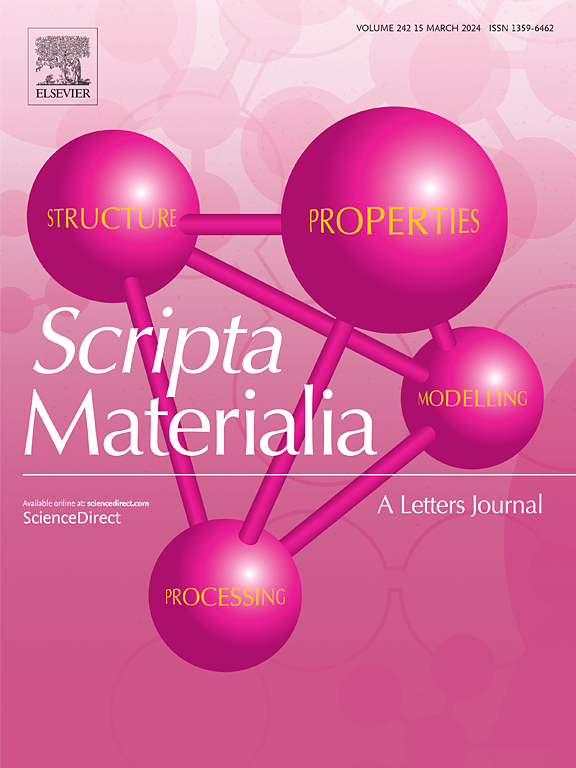纳米孔锌-水反应催化增强制氢
IF 5.6
2区 材料科学
Q2 MATERIALS SCIENCE, MULTIDISCIPLINARY
引用次数: 0
摘要
我们证明,通过电替换将Ni原子团簇作为催化剂沉积在纳米孔锌(NP-Zn)上,可以显著增强纳米孔锌(NP-Zn)与水之间的反应生成氢。在电替换过程中,溶液中的Ni 2 +以Ni原子的形式沉积在NP-Zn上,而Zn原子从NP-Zn上溶解成Zn 2 +。电感耦合等离子体发射光谱分析表明,沉积的ni / zn比为1 at。%,受限于NP-Zn与含水Ni 2 +溶液反应生成氧化锌。x射线衍射证实镍的沉积和氧化锌的形成是同时发生的。我们的最佳沉积时间产生的ni - zn比为0.9 at。%,产氢率约为75%,而无Ni催化剂的原始NP-Zn的产氢率约为52%,商业散装Zn的产氢率约为13%。这突出了ni修饰的NP-Zn在改善析氢反应动力学方面的潜力,为按需制氢提供了一种可扩展的方法。本文章由计算机程序翻译,如有差异,请以英文原文为准。

Catalytic enhancement of hydrogen generation through the nanoporous zinc-water reaction
We demonstrate that the reaction between nanoporous zinc (NP-Zn) and water to generate hydrogen can be significantly enhanced by using Ni atom clusters as a catalyst deposited onto NP-Zn through galvanic replacement. During galvanic replacement, Ni²⁺ in solution deposits as Ni atoms on NP-Zn, while Zn atoms dissolve from NP-Zn as Zn²⁺. Inductively Coupled Plasma Optical Emission Spectroscopy shows that the deposited Ni-to-Zn ratio is <1 at.%, limited by zinc oxide formation from the reaction between NP-Zn and the water-containing Ni²⁺ solution. X-ray diffraction confirms that Ni deposition and zinc oxide formation co-occur. Our optimal deposition time yields a Ni-to-Zn ratio of 0.9 at.%, which produces hydrogen with a yield of ≈75 %, compared to ≈52 % for pristine NP-Zn without Ni catalyst and ≈13 % for commercial bulk Zn. This highlights the potential of Ni-modified NP-Zn in improving hydrogen evolution reaction kinetics, offering a scalable approach for on-demand hydrogen production.
求助全文
通过发布文献求助,成功后即可免费获取论文全文。
去求助
来源期刊

Scripta Materialia
工程技术-材料科学:综合
CiteScore
11.40
自引率
5.00%
发文量
581
审稿时长
34 days
期刊介绍:
Scripta Materialia is a LETTERS journal of Acta Materialia, providing a forum for the rapid publication of short communications on the relationship between the structure and the properties of inorganic materials. The emphasis is on originality rather than incremental research. Short reports on the development of materials with novel or substantially improved properties are also welcomed. Emphasis is on either the functional or mechanical behavior of metals, ceramics and semiconductors at all length scales.
 求助内容:
求助内容: 应助结果提醒方式:
应助结果提醒方式:


